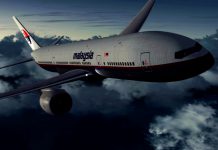Over ten million superclusters in the observable universe. Each containing tens- or even hundred thousands of galaxies. Each containing hundreds of billions of stars. Each star home to multiple planets, most likely.
Punching a few numbers on my calculator, while eating my steak with veggies, presents me a rough number of 10^25 planets (or 10,000,000,000,000,000,000
Numbers like these can easily trick one to believe that intelligent and space-faring lifeforms MUST, therefore, be the norm. But I have the impression most people overlook the unimaginable time-scales involved. Planets and stars have a rather limited life-span on cosmic scales and with the only known place where life actually emerged (Earth), it took almost until the end of our planet’s lifespan before intelligence started to evolve.

My colleague and I discussed a wide range of topics the last few days. From technical glitches of the 747 and fuel decisions to more important things like relationships, food, human nature, and life.
We dimmed all lights after sunset and quietly enjoyed the night sky unfolding before our windows.
A moonless night revealed billions of stars, the bright core of the galaxy, a handful of planets, and all of the adventures that are waiting to be experienced out there one day.Technical data: Nikon D850, 10.5mm Fisheye, f/2.8, 13 seconds, ISO 8000.
Christiaan is one of the world’s leading aviation photographers and more of his work and more close encounter (s) can be found here.
You can follow Christiaan on Instagram here: @jpcvanheijst
























